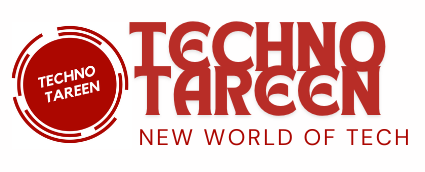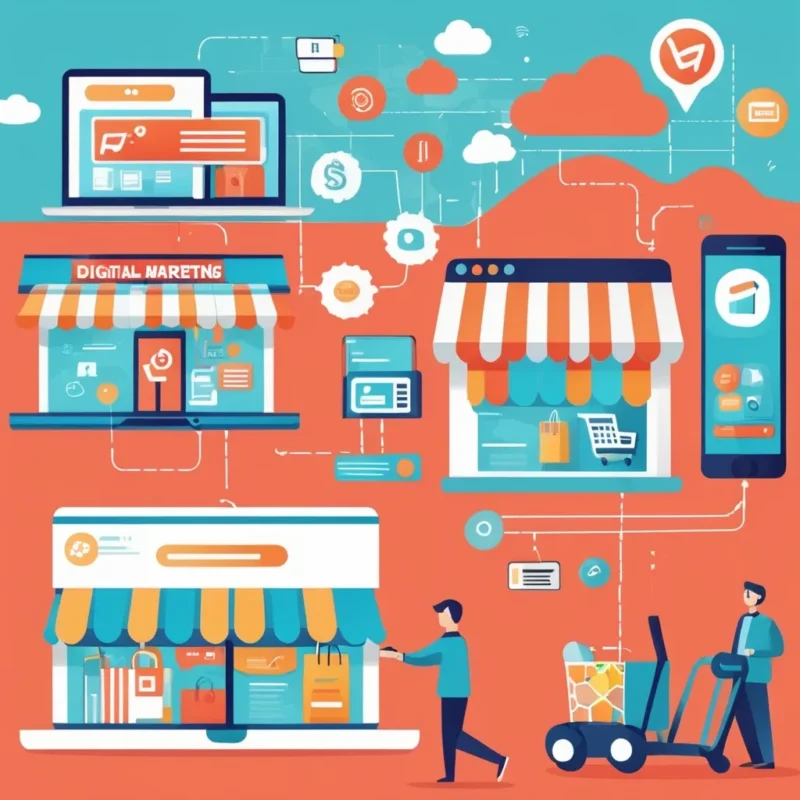Digital Marketing
The Relationship Between Digital Marketing and E-commerce
Digital marketing and e-commerce are two intertwined fields that have revolutionised the way businesses operate, connect with customers, and drive sales. The integration of digital marketing strategies within the e-commerce sector has not only enhanced the way products and services are marketed but also transformed the entire customer journey, from discovery to purchase.
This essay explores the relationship between digital marketing and e-commerce, the tools and strategies used, the evolution of consumer behaviour, and the future trends shaping the industry.
Digital Marketing and E-commerce
Digital marketing is the use of digital channels, platforms, and technologies to promote products and services. It encompasses a broad range of tactics including search engine optimisation (SEO), content marketing, social media marketing, email marketing, pay-per-click (PPC) advertising, and more.
E-commerce, on the other hand, refers to the buying and selling of goods and services over the internet. The synergy between digital marketing and e-commerce is critical as it allows businesses to reach a global audience, target specific demographics, and optimise sales processes.
The relationship between digital marketing and e-commerce is symbiotic. E-commerce platforms provide the products and services that digital marketing strategies aim to promote. Without effective digital marketing, e-commerce sites would struggle to attract traffic, convert visitors into customers, and retain those customers over time.
Conversely, the success of digital marketing efforts is often measured by their impact on e-commerce sales and revenue. This interdependence has led to the development of integrated marketing strategies that prioritize both visibility and conversion.
Digital Marketing Strategies in E-commerce
Several digital marketing strategies have proven effective in driving e-commerce success. Each strategy has its unique advantages and is often used in combination with others to create a comprehensive marketing plan.
1. Search Engine Optimisation (SEO)
SEO is the process of optimizing a website to rank higher in search engine results pages (SERPs). For e-commerce businesses, SEO is crucial because a higher ranking translates to increased visibility and traffic.
Effective SEO strategies for e-commerce include optimizing product descriptions, improving site speed, using relevant keywords, and ensuring a mobile-friendly design. E-commerce sites with strong SEO are more likely to attract organic traffic, which often leads to higher conversion rates.
2. Content Marketing
Content marketing involves creating and sharing valuable content to attract and engage a target audience. For e-commerce, content marketing can take the form of blog posts, product videos, how-to guides, and customer testimonials.
By providing useful and relevant content, e-commerce businesses can build trust with potential customers, improve their search engine rankings, and drive traffic to their sites. Content marketing also supports other digital marketing efforts by providing material that can be shared on social media, used in email campaigns, or promoted through PPC ads.
Our More Services: On Page optimisation a Step-by-Step Guide
3. Social Media Marketing
Socialmedia platforms like Facebook, Instagram, Twitter, and Pinterest offer e-commerce businesses a way to reach a vast audience, engage with customers, and promote their products.
Social media marketing strategies include posting regularly, running targeted ads, using influences to promote products, and engaging with followers through comments and direct messages.
Social media is especially effective for brand building, as it allows businesses to showcase their products, share customer reviews, and create a community around their brand.
4. Email Marketing
Email marketing remains one of the most effective digital marketing strategies for e-commerce. It involves sending targeted emails to customers and prospects to promote products, offer discounts, and share company news.
Email marketing is highly customizable, allowing businesses to segment their audience based on factors like purchase history, browsing behavior, and demographics. Personalized emails can lead to higher open rates, click-through rates, and conversions. Additionally, email marketing is a valuable tool for nurturing customer relationships and encouraging repeat purchases.
5. Pay-Per-Click (PPC) Advertising
PPC advertising allows e-commerce businesses to place ads on search engines, social media platforms, and other websites, paying only when someone clicks on the ad. Google Ads is one of the most popular PPC platforms, allowing businesses to bid on keywords related to their products.
PPC is effective for driving traffic to e-commerce sites, especially when combined with SEO efforts. By targeting specific keywords and demographics, businesses can ensure their ads are seen by potential customers who are likely to make a purchase.
6. Influencer Marketing
Influencer marketing involves partnering with individuals who have a large following on social media to promote products. Influencers can help e-commerce businesses reach new audiences, build credibility, and drive sales.
This strategy is particularly effective in niches like fashion, beauty, and lifestyle, where influencers’ recommendations can significantly impact consumer behavior. By choosing the right influencers, e-commerce brands can amplify their message and connect with potential customers in a more authentic way.
7. Affiliate Digital Marketing and E-commerce
Affiliate marketing is a performance-based marketing strategy where e-commerce businesses reward affiliates for driving traffic or sales through their marketing efforts. Affiliates can be bloggers, social media influencers, or other websites that promote products in exchange for a commission.
This strategy allows e-commerce businesses to expand their reach without investing heavily in advertising. It also provides affiliates with an incentive to promote products effectively, leading to a win-win situation for both parties.
Evolution of Consumer Behaviour in the Digital Age
The rise of digital marketing and e-commerce has significantly influenced consumer behavior. The way people discover, evaluate, and purchase products has changed, driven by the accessibility of information and the convenience of online shopping.
1. The Shift to Online Shopping
One of the most significant changes in consumer behavior is the shift from in-store to online shopping. The convenience of e-commerce, combined with the ability to compare prices, read reviews, and have products delivered to their doorsteps, has made online shopping the preferred method for many consumers.
This shift has been accelerated by the COVID-19 pandemic, which forced many brick-and-mortar stores to close temporarily, driving more people to shop online.
2. The Importance of Mobile Digital Marketing and E-commerce
With the increasing use of smartphones, mobile commerce (m-commerce) has become a critical component of e-commerce. Consumers are now more likely to shop on their mobile devices than on desktops or laptops.
This trend has prompted e-commerce businesses to optimize their websites for mobile devices, ensuring a seamless shopping experience regardless of the device used. Mobile apps have also become popular, offering features like personalized recommendations, easy checkout processes, and push notifications to keep customers engaged.
3. The Role of Social Proof
Social proof, such as customer reviews, ratings, and testimonials, has become a powerful influence on consumer behavior. Before making a purchase, many consumers read reviews to gauge the quality and reliability of a product.
E-commerce businesses that encourage and display customer reviews are more likely to build trust with potential customers and increase their conversion rates. Social media also plays a role in social proof, as consumers often look to their peers and influencers for recommendations.
4. Personalization and Customer Experience
Today’s consumers expect personalized experiences when shopping online. They want product recommendations based on their browsing history, personalized email offers, and a seamless checkout process.
E-commerce businesses that use data to personalize the shopping experience can significantly enhance customer satisfaction and loyalty. Personalization can be achieved through various means, including AI-driven product recommendations, targeted email campaigns, and tailored website content.
5. The Demand for Fast and Free Shipping
Shipping speed and cost have become crucial factors in consumers’ purchasing decisions. Many e-commerce giants, like Amazon, have set the standard with fast and free shipping options. Consumers now expect their orders to arrive quickly, and they are often willing to pay a premium for expedited shipping.
E-commerce businesses that offer competitive shipping options are more likely to attract and retain customers. Additionally, clear communication about shipping times and costs can prevent cart abandonment and enhance the overall shopping experience.
Future Trends in Digital Marketing and E-commerce
As technology continues to evolve, so too will digital marketing and e-commerce. Several emerging trends are likely to shape the future of these industries.
1. The Rise of Artificial Intelligence and Automation
Artificial Intelligence (AI) and automation are poised to revolutionize digital marketing and e-commerce. AI can be used to analyze customer data, predict trends, and personalize marketing efforts on a scale that would be impossible for humans to achieve.
Chatbots, powered by AI, are becoming common on e-commerce sites, providing instant customer support and guiding users through the buying process. Automation tools can streamline marketing campaigns, optimize ad spend, and improve targeting, allowing businesses to operate more efficiently and effectively.
2. The Growth of Voice Commerce
Voice commerce, driven by the increasing popularity of smart speakers and voice assistants like Amazon Alexa and Google Assistant, is an emerging trend in e-commerce. Consumers are using voice commands to search for products, make purchases, and reorder items.
E-commerce businesses will need to optimize their sites for voice search by focusing on natural language keywords and ensuring that their product listings are easily accessible via voice commands. As voice commerce grows, it could become a significant revenue stream for e-commerce businesses.
3. The Expansion of Augmented Reality (AR) and Virtual Reality (VR)
Augmented Reality (AR) and Virtual Reality (VR) are transforming the way consumers shop online. AR allows customers to visualize products in their real-world environment before making a purchase, which is particularly useful for furniture, clothing, and accessories.
VR offers immersive shopping experiences, allowing customers to explore virtual stores or try on products in a virtual fitting room. As AR and VR technologies become more advanced and accessible, they will likely play a larger role in e-commerce, enhancing the shopping experience and reducing the likelihood of returns.
4. Sustainability and Ethical Consumerism
Consumers are becoming increasingly concerned with sustainability and ethical consumerism. They are more likely to support brands that prioritize environmentally friendly practices, fair labor, and ethical sourcing.
E-commerce businesses that adopt sustainable practices, such as using eco-friendly packaging, reducing carbon footprints, and supporting social causes, can appeal to this growing segment of conscious consumers. Transparent communication about these efforts is key to building trust and loyalty among customers who value sustainability.

